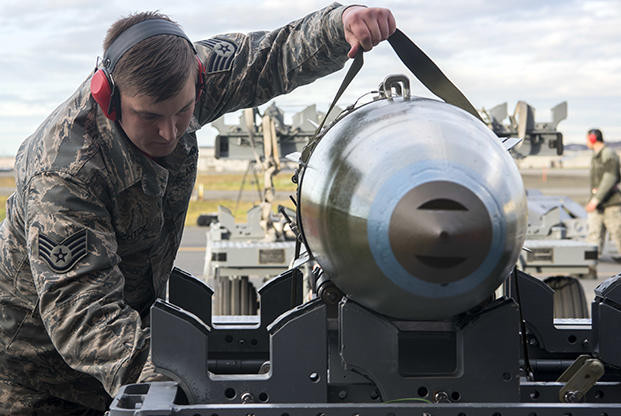
Air Force SSgt. Taylor Bechtol, a 90th Aircraft Maintenance Unit weapons load crew chief, loosens the straps on a GBU-32 Joint Direct Attack Munition (JDAM) during the quarterly load competition at JB Elmendorf-Richardson, Alaska, on Oct. 26, 2018. Photo by A1C Jonathan Valdes Montijo
A separate Pentagon industrial base report, from May 2018, warned that the tendency of contractors to only modestly improve existing munition designs has atrophied the talent base. Design skills today “are at risk,” the Pentagon’s Office of Manufacturing and Industrial Base Policy concluded.
The Air Force is developing a new munition to succeed the JDAM. The lighter-weight, satellite-guided weapon will have infrared as well as satellite guidance, wings to allow it to glide and maneuver on its way to the target, and could include stealth characteristics and some kind of electronic warfare capability.
A former top Air Force official said it must maneuver not only to evade pinpoint air defenses, but to pursue mobile targets.
The Air Force Association’s Mitchell Institute for Aerospace Studies, in a September 2018 report, asserted that munitions technology writ large is due for a major overhaul. There is a trend toward dynamic retargeting—in which combat aircrews frequently take off without knowing the kind of target they’ll be going after—while there aren’t enough aircraft to refly sorties just because they weren’t carrying the right weapons. Because of these trends, Mitchell argued, it’s crucial to develop munitions whose blast effects can be adjusted before release.
The Air Force needs “new effects design concepts such as variable yield, adapted effects, adjustable effects, and systems of employment,” the Mitchell report said.
The Air Force has not officially described any other new precision guided munitions programs to succeed its current slate of PGMs.

